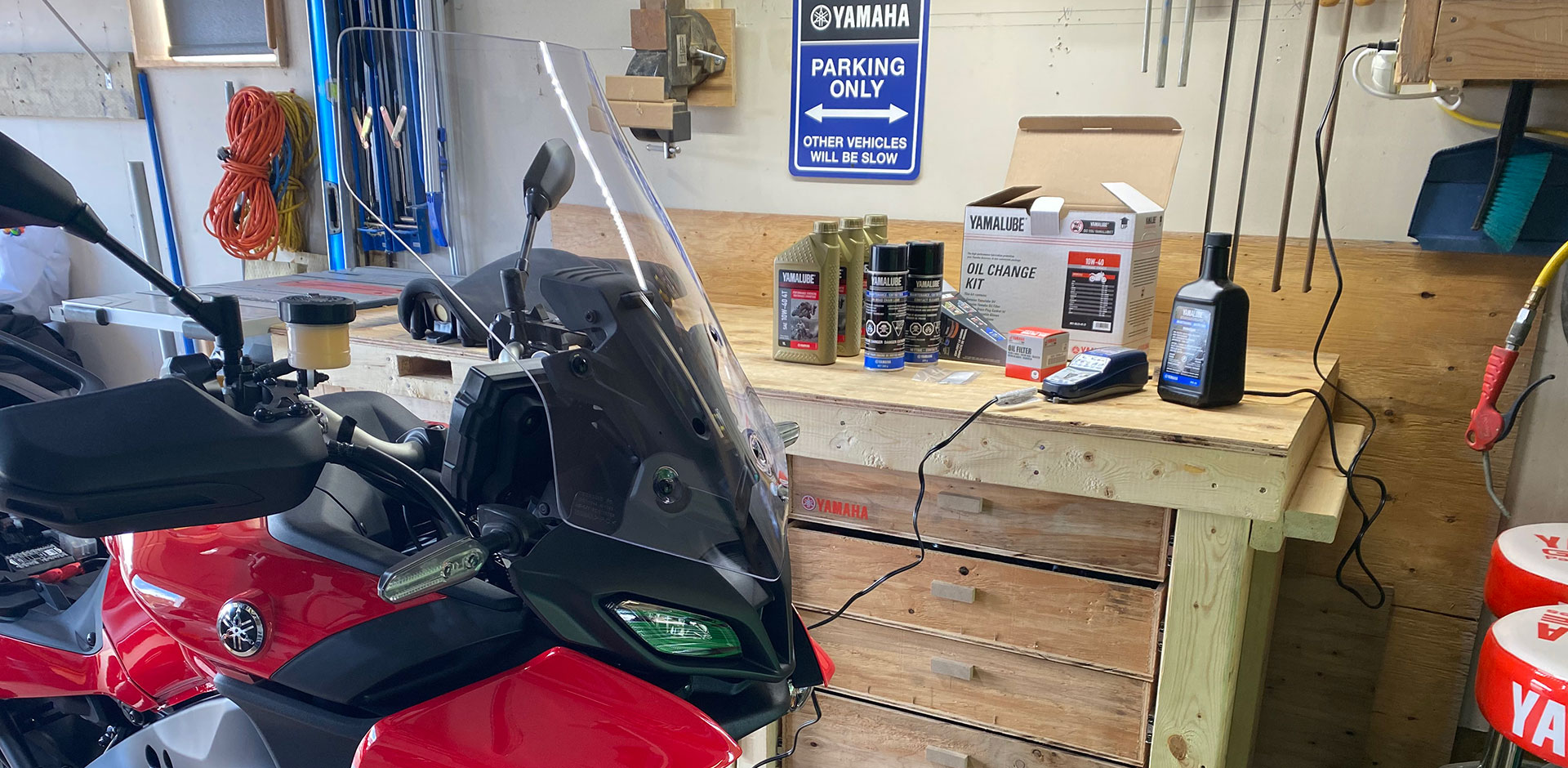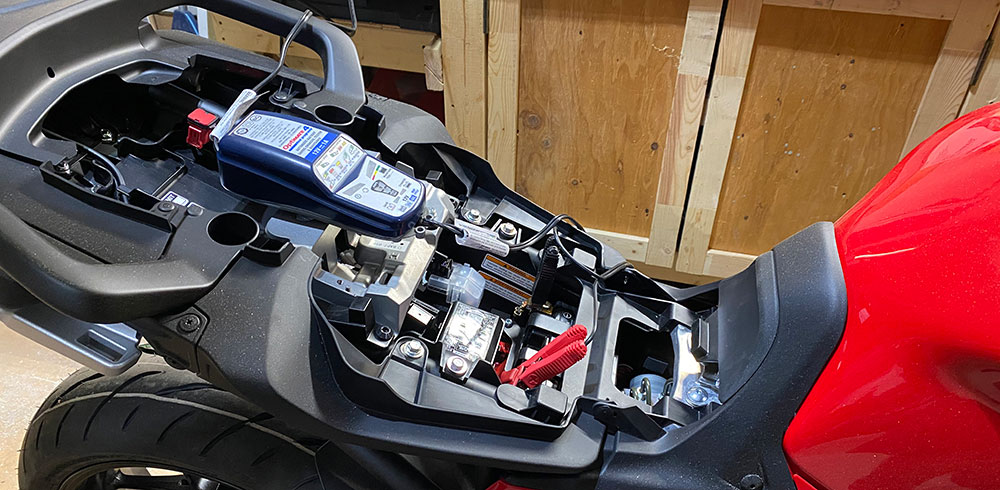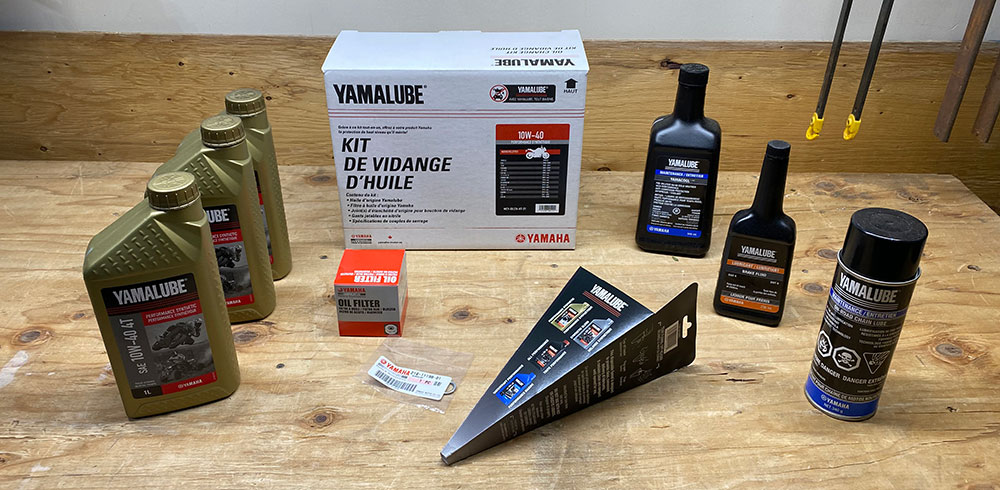TIPS FOR SPRING MOTORCYCLE PREP

As a motorcycle enthusiast, living in Canada means dealing with the changing seasons – and, for most, putting bikes away for the winter. As the snow melts and the spring thaw begins, riders PREP for motorcycle season. Taking time to go through the necessary maintenance procedures, visual inspections, and last-minute prep work is crucial to get the most possible seat time during the riding season.
The most common – and often overlooked – issue riders face when pulling their motorcycles out of storage is related to a dead battery. Certain features like sensors, clocks and some accessories on newer bikes draw power from the battery even when the ignition is off. To counteract this parasitic draw, riders can test, charge and maintain battery levels with the OptiMATE 4 Dual Program Battery Charger. This can even be used to recover dead batteries that have become sulfated over the course of the off-season.
Battery maintenance is important, especially in the colder Canadian provinces where there is the potential for your battery to freeze. The last thing you want is to turn the key on the first nice day of the season and there’s not enough battery charge to start the engine.

As you continue to prepare your motorcycle for the riding season, it’s best to use the downtime during the early Spring to check, top up and change your bike’s essential fluids. Yamalube® Oil Change Kits are a great place to start and can be conveniently purchased online. Each kit includes the required amount of oil, a model-specific filter and the necessary gaskets to change your oil in the comfort of your own garage.
Brake Fluid and Coolant are two other often overlooked fluids required for your motorcycle to be road ready. It’s best practice to check the levels of these fluids and top up as required. To protect and maintain your fuel system, it’s best to use Ring Free Plus. Yamalube® Ring Free Plus works to clean fuel injectors, carburetors, intake valves and combustion chambers. Advanced metal filmers work to protect the metal components in your fuel system from the corrosive effects of ethanol sulfate salt.

The final item on your preseason checklist should be to conduct an overall visual inspection of your motorcycle. First, check all lights, turn signals and the gauge cluster to ensure electrical components are working as they should. Next, thoroughly check your tires for bald spots, cracks or flat spots, and make sure they are suitable for the upcoming season (indicated by the wear bars in the tread).
Inspect the front and rear brakes to make sure nothing has seized in the off-season and that the brake pads are not worn down to the indicator line (similar to the wear indicators on your tires). If you’re able to squeeze your front brake lever all the way to the handlebar, or it feels spongy, you should bleed the brake system as a safety precaution.
Finally, check your rear chain or belt. If you have a chain, check for evidence of slack and tighten as necessary based on the specs in your owner’s manual (be sure not to overtighten), and then coat with On-Road Chain Lube. If you have a belt, check for any damage in the form of tears or fraying on both sides and ensure the tension is within the specs in your owner’s manual.

Sure, the preseason check can seem daunting – especially when all you want to do is get out and ride – but it’s the best way to get the most out of your entire season. Regular maintenance and attention to detail when putting your bike away for the winter can also help shorten the list of Spring tasks. Remember, safety is your number one priority on the road. With the help of these preseason tips and tricks, you and your motorcycle will be in mid-season form on that first Spring ride.
May 26, 2021